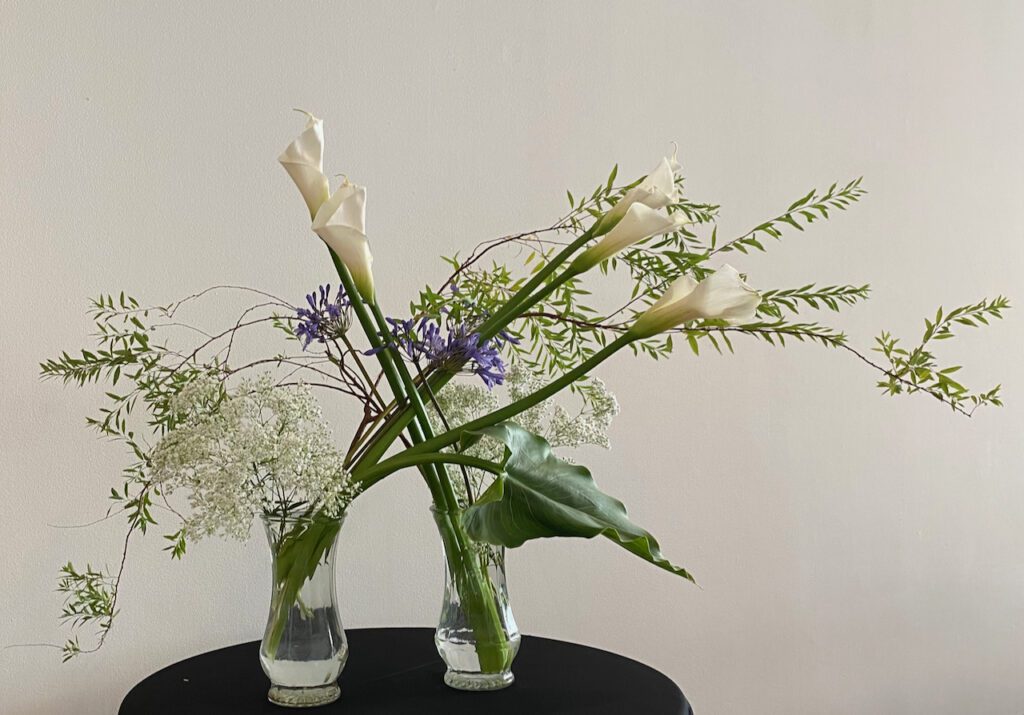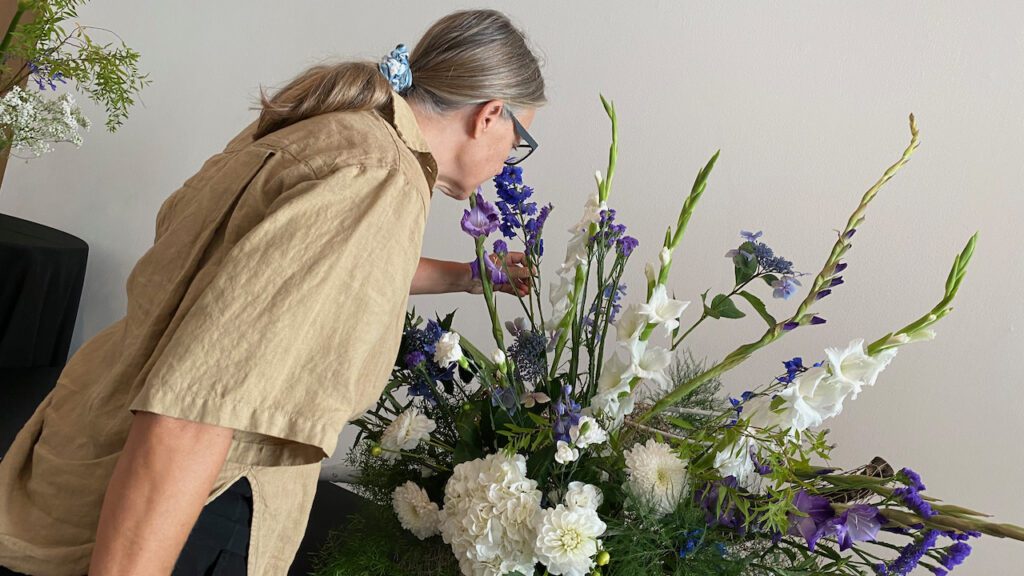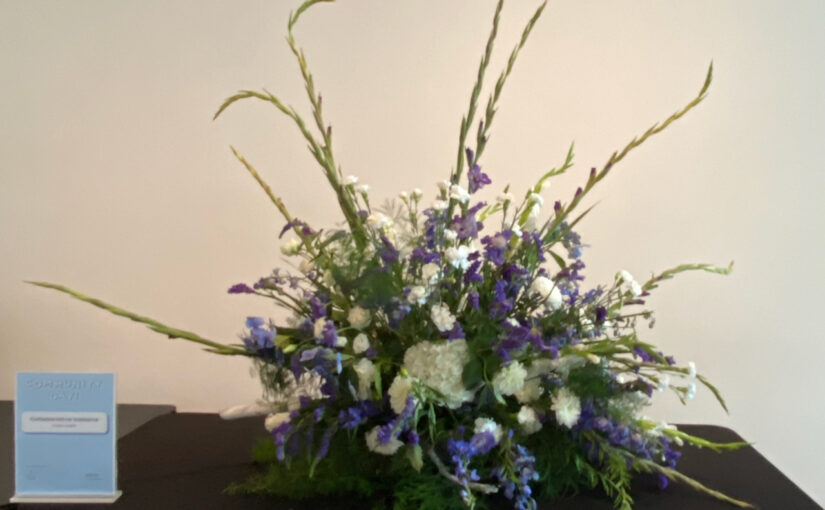What I Learned from my Ikebana collaboration experiment
I’ve done it only twice, but what I found from the collaborative Ikebana experiment is interesting enough to share with you.
Last October I was invited to participate in an event to celebrate Color of Biodiversity at Frye Art Museum. The detail of the event is posted in my previous post.
Since my program was quite popular, Frye Art Museum asked me to come back at their Community Day event earlier this month. I was more than delighted!
This time the event had no particular theme as to which color to stick with, so I chose the color on my own: Blue! That’s because I wanted to wear my favorite summer kimono and obi. All the flowers, although in a variety of kinds and shapes, should be either blue or white in color to match my kimono!

Just like I did last October, I made a smaller arrangement on my own, just to show the visitors as an example.
For the main arrangement for each visitor to collaborate upon, I only created a platform with branches and a couple of flowers. My intention was to maintain the basic structure of the arrangement (horizontal), and the focal point (a large hydrangea).
The event started at 11 am. The door opened, and visitors came in. Just like I did last October, I asked each visitor to pick one flower and add it to the platform. Which flower to pick, where to place it in which direction… I left it all to each visitor. I merely helped them whenever they had difficulty in placing it.

Nobody said no to my offer. Everybody picked one flower (sometimes two!), contemplated for a moment (sometimes a long time!), and placed it on the spot they thought the most appropriate.



By the time the event was over at 2 pm, the bare platform was filled with so many flowers. About 100 people collaborated to complete the arrangement. Thank you and congratulations, everyone!

Can you tell the similarity between the collaborative arrangements last October and this month?
When I prepared the platform, both in October and this month, I intentionally placed the two branches so that the whole structure would be asymmetric. The overall structure is horizontal, but one side is shorter than the other side. The horizontal line is a little tilted, from down left to upper right.
The basic structure I intended, however, gradually disappeared. The wide space initially created with two branches, was evenly divided by long lines of flowers. White flowers and blue flowers were distributed evenly. The overall shape of the arrangement looked more and more symmetric.
By a majority of the people, symmetry and even distribution in the space seem to look most comfortable. No wonder the two arrangements ended up looking alike.
When I create a flower arrangement, on the other hand, symmetry and evenness are the last thing I want to see, because they look boring. Break the symmetry, break the evenness. Can I still create something beautiful? That’s the challenging, and fun part of Ikebana.
The Ikebana arrangement I created by myself lacks that smooth, evenness. The rough angle, and the asymmetry, might intrigue some but tick off others. But I dare push to the limit. That’s my creativity.
The collaborative Ikebana, gradually smooths out the edge, and eventually becomes a work that the majority of people admire with ease.
There is nothing wrong with the collaborative work. But if you want some breakthrough, you might want to work alone first…
